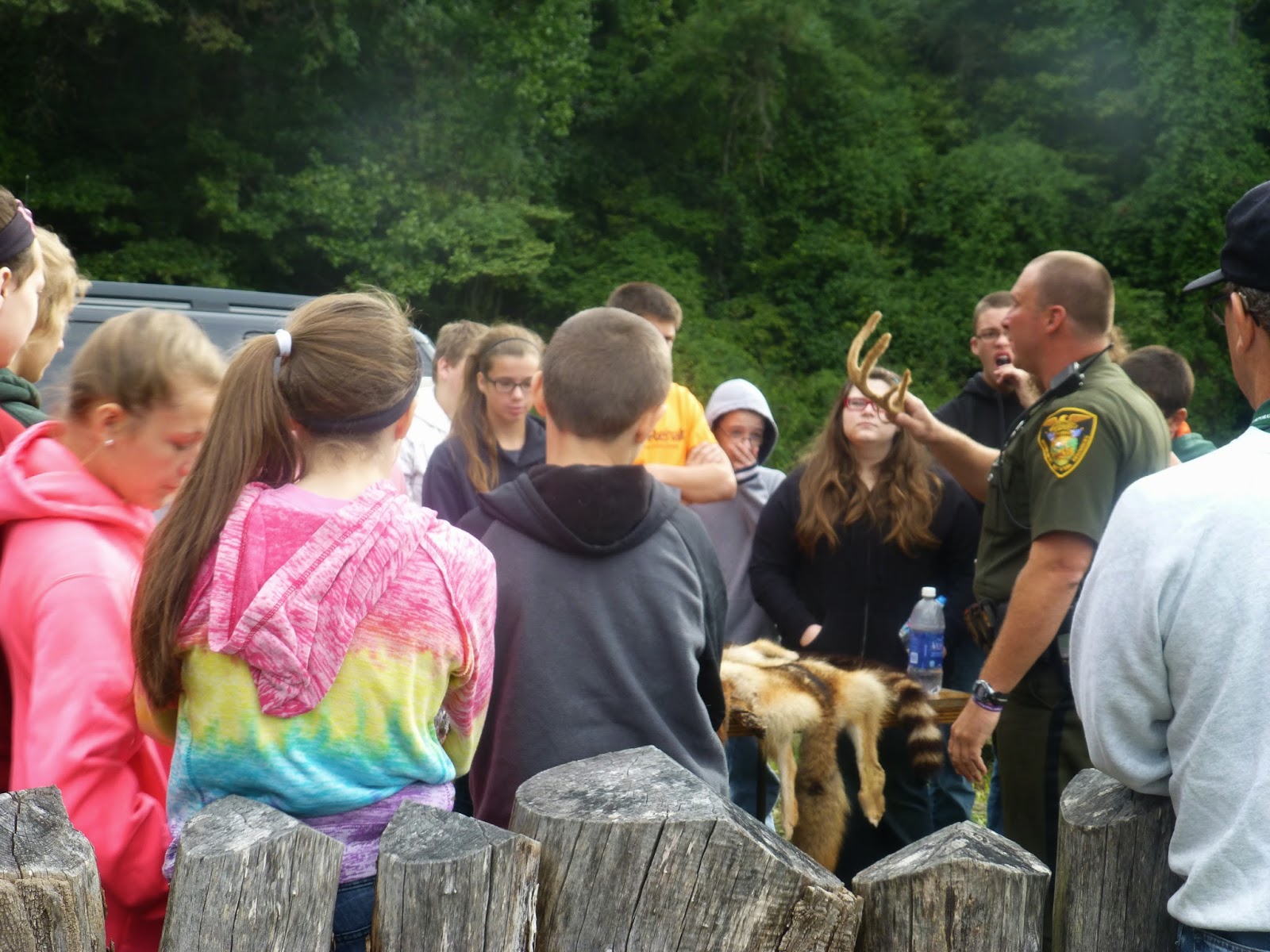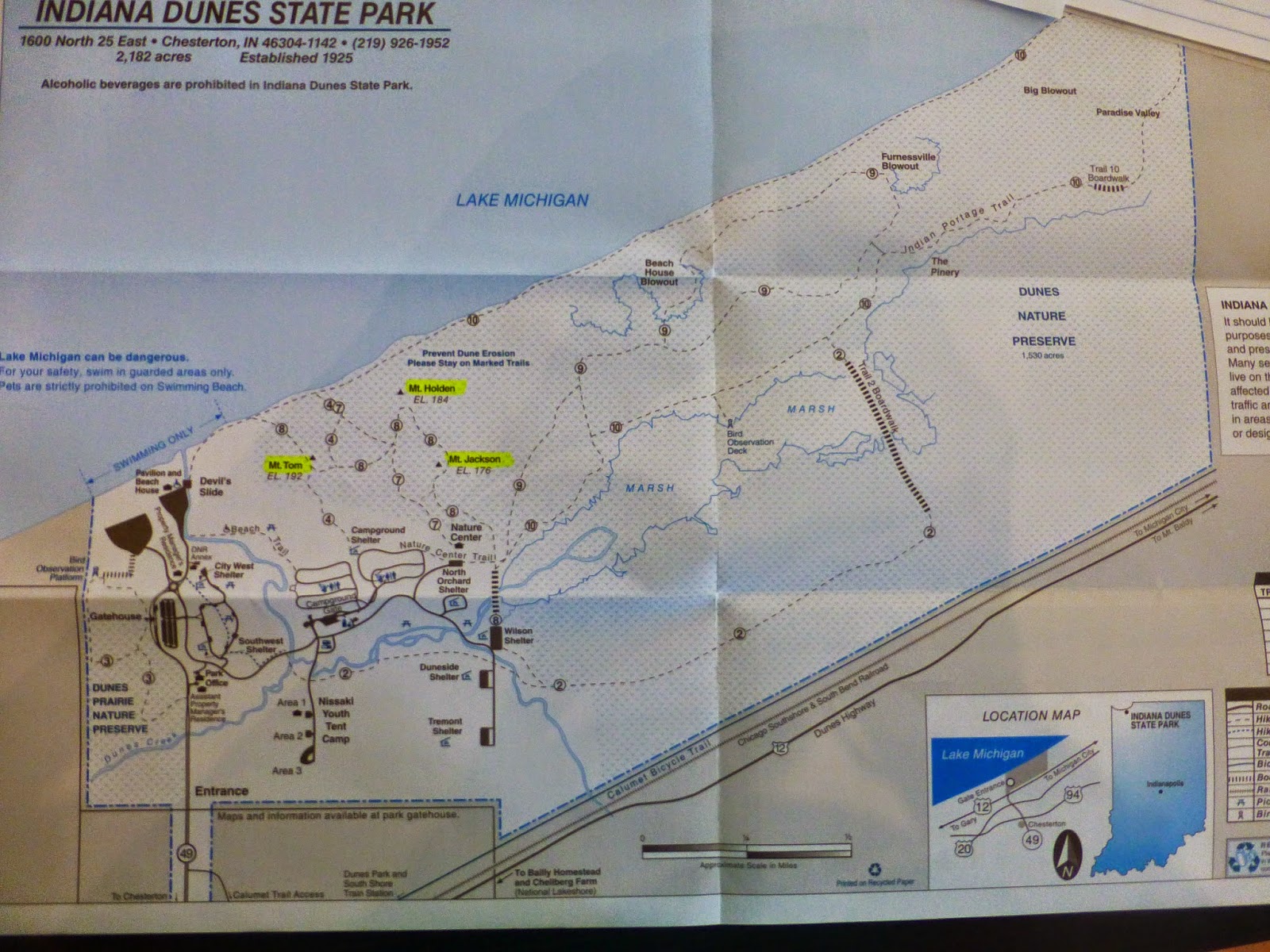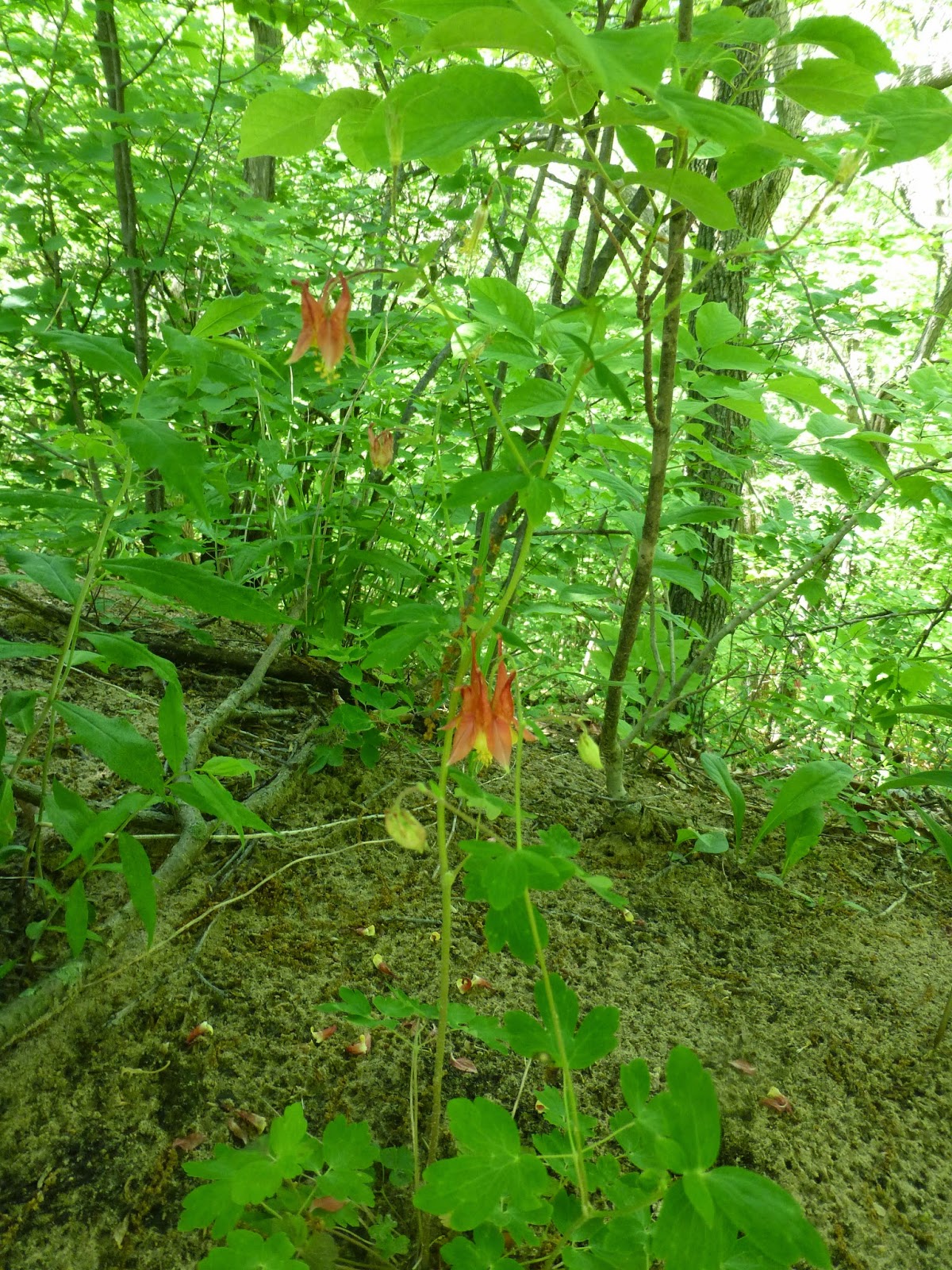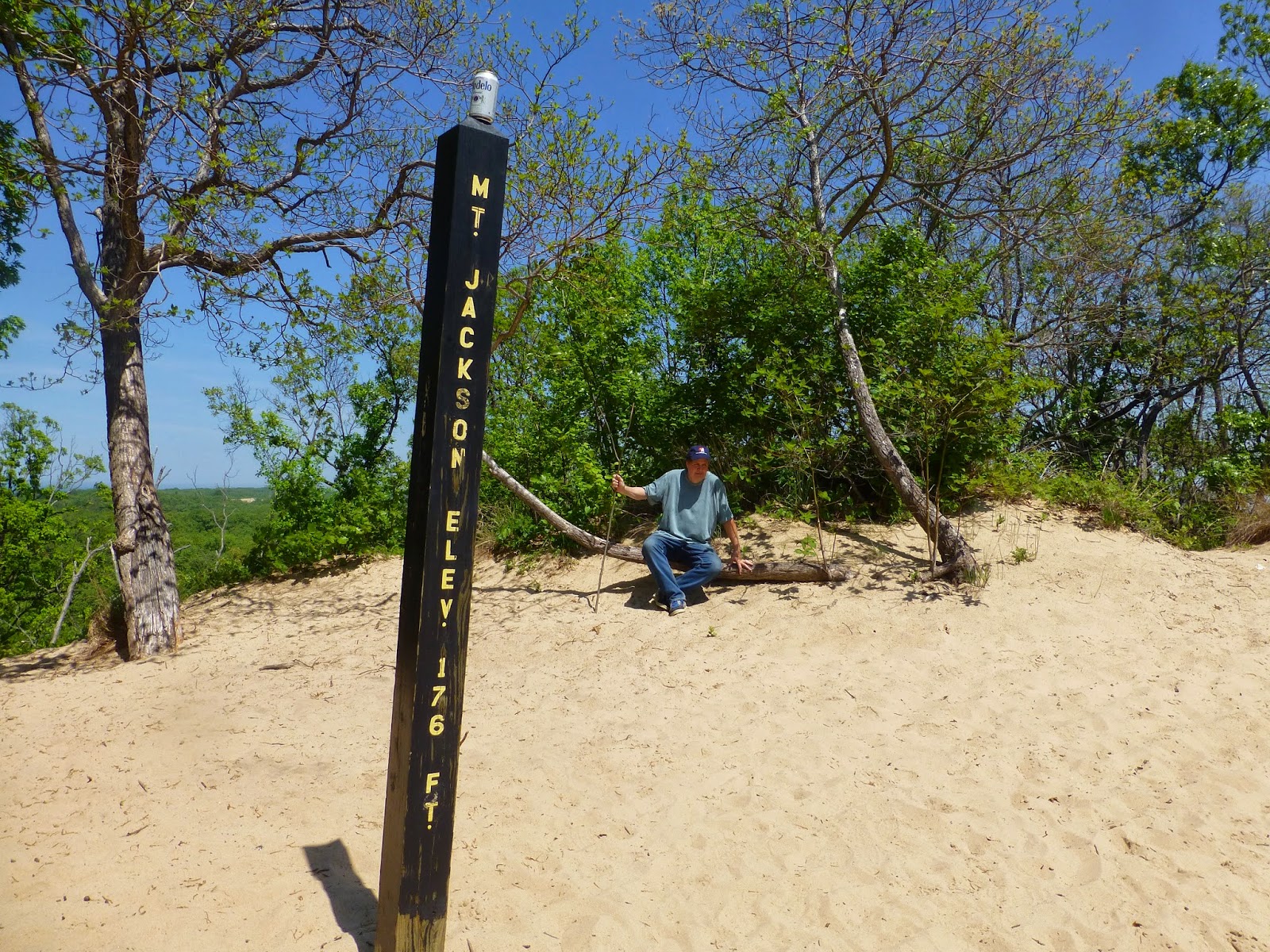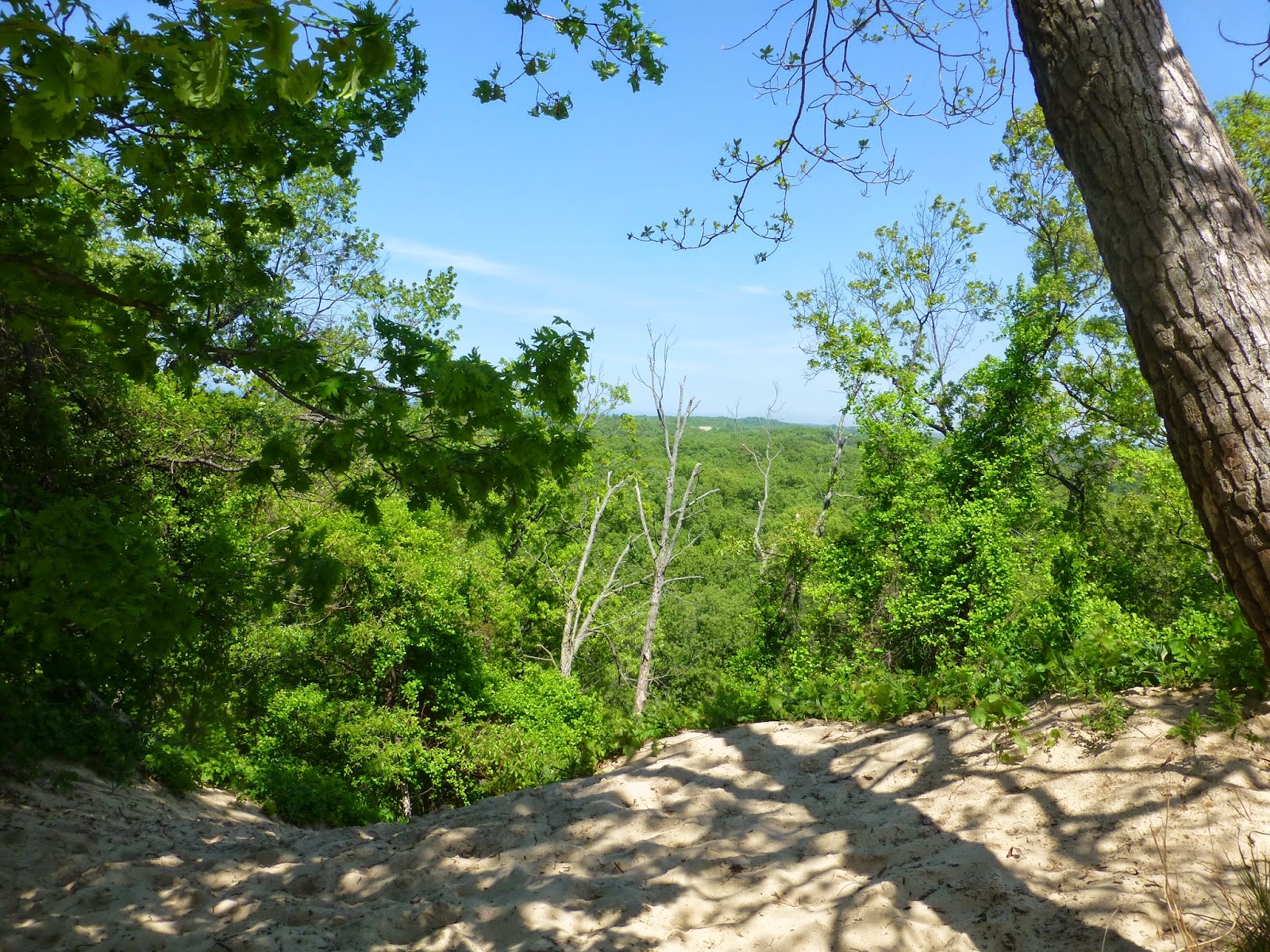(Unfortunately, I have lost the photos taken during this
walk. Fortunately, I had posted a good number of them into a Facebook album
before they were lost, and was able to download those and use them in this blog
post. This problem also delayed the publishing of this entry.)
Coffee Creek Park
Chesterton, Indiana
May 29, 2014
We had visited the Indiana Dunes again, and we had
accomplished the 3 Dune Challenge.
It was then our day to, reluctantly, leave.
We went to downtown Chesterton for a casual, leave-taking
lunch at Peggy Sue's Diner, where Richard had the “Cadillac Burger”.
After buying a wonderful old picnic basket at an antique
shop, we drove around the block, still reluctant to leave. We came upon a sign,
"Coffee Creek Park", adjacent to an area that seemed so lush, green and natural
for a spot so close to downtown buildings. So, we needed to investigate, before
heading south on Highway 41.
Coffee Creek Park is a city park of wetlands, woods, creek
and boardwalk trails, snugged right up against the back of Peggy Sue's Diner
and other downtown establishments. It could be confused (as I did at first)
with Coffee Creek Watershed Preserve, which is a 157-acre area a mile from the
city park. We will explore that one another time.
Coffee Creek, the color of cafe au lait, winds importantly
through Chesterton but, strangely, was not shown on the map of Chesterton that
we possessed. Coffee Creek Park and Coffee Creek Watershed Preserve were also
missing from said map, which is why coming upon one of them was a serendipitous
experience.
We were to discover that the city park represents a very
lovely balance between recreation, nature appreciation and preservation, and I
would consider it a model for other city parks which either possess natural
features or could develop them.
The first scene from the parking lot was a small, neat
playground, at that time being enjoyed by a few young mothers and their small
children.
We proceeded on the trail to the left of the playground and
came to the first bridge.
Classic wetland: Cat-tails and Willow
trees
The first boardwalk trail ...
I felt enticed to continue when I saw the boardwalk curving
and disappearing through the vegetation.
As in many places, the keeper of this park must struggle with
the onslaught of invasive species. In the background, a dense stand of the
tall, intensely invasive Phragmites australis (Common Reed) was fronted by a
swath of Cat-Tails, a native plant that, depending upon species, can behave as
an invasive. However, Cat-tails provide nesting space, protective cover and
food for many kinds of wildlife and have been used in a number of ways by
Native Americans.
I loved the artistry of the many bends and turns in the
boardwalk trail, which kept us high and dry and prevented us from disturbing habitat.
Another part of the boardwalk trail can be seen in the distance, as it winds
sinuously throughout the park:
Nice, metal-sided bridges on the trails provide safety
without cutting off the view of the creek. A small child can still watch ducks,
snakes, dragonflies and other creek animals.
It was wonderful, the way these boardwalks took us through
different habitats …
… including swampy
places.
I wondered how many acres this park covered. It had to be a
small place, yet it felt so quiet and removed in many places.
The planning of these trails also amazed me. The way the
boardwalks wound around here and there, we could cover more distance and see
much more. It was very creative and well thought out.
Here is a view from one bridge, looking toward one from a
previous photo.
The creek was very slow in most places that day, so that
trees were mirrored in the water. The “islands” of habitat, reflections,
bridges and the winding creek and trails reminded me of Japanese gardens. Maybe
the planners were inspired by those.
Great Willow trees on a peninsula
Red-Winged Blackbirds, common in wetlands, were flying and
calling around us with their swampy-sounding “ker-pe-cheeee!”
Purple-Stemmed Angelica, a.k.a. Great
Angelica (Angelica atropupurea)
I had never seen this large, striking plant before.
Possibly Cow Parsnip
(Heracleum maximum), related to Angelica.
There is a place in Ouabache Trails Park (near Vincennes,
Indiana) that desperately needs a boardwalk to protect wildlife habitat and
help people cross over the wetland. Here at Coffee Creek Park, I found many
construction elements that could be adapted to Ouabache Trails.
We spotted the first gazebo, which was a nice surprise. What
a nice spot for meditation, conversation, or lunch. It, too, seemed to be
inspired from Japanese gardens.
Boardwalks lead to and from gazebos
Then, we needed to see what that wooden area was beyond this
gazebo.
Lo and behold … a horseshoe arena! Complete with judges'
tables and lighting. This was another unique way to sustainably blend
recreation with natural surroundings. I also liked the way the boardwalk
skirted the edge of the arena, blended but separate. This arena was very near a
parking area behind downtown buildings – another way to enter and enjoy the
park.
Lastly, when the boardwalk trail turned to regular dirt
trail, we came upon this lovely fishing
American Lotus plants flourished with their roots in the
pond's muddy bottom. A man was fishing nearby from a lawn chair.
A male 12-Spotted
Skimmer dragonfly (Libellula pulchella) settled near enough for a photo, wings
glimmering in the sun.
The trail in the sun would wind around and take us back to
the official park entrance, where we began.
If I lived in Chesterton, I would certainly frequent this
very accessible yet remote-seeming place. It is one of the aspects of this town
that make its residents very fortunate.































